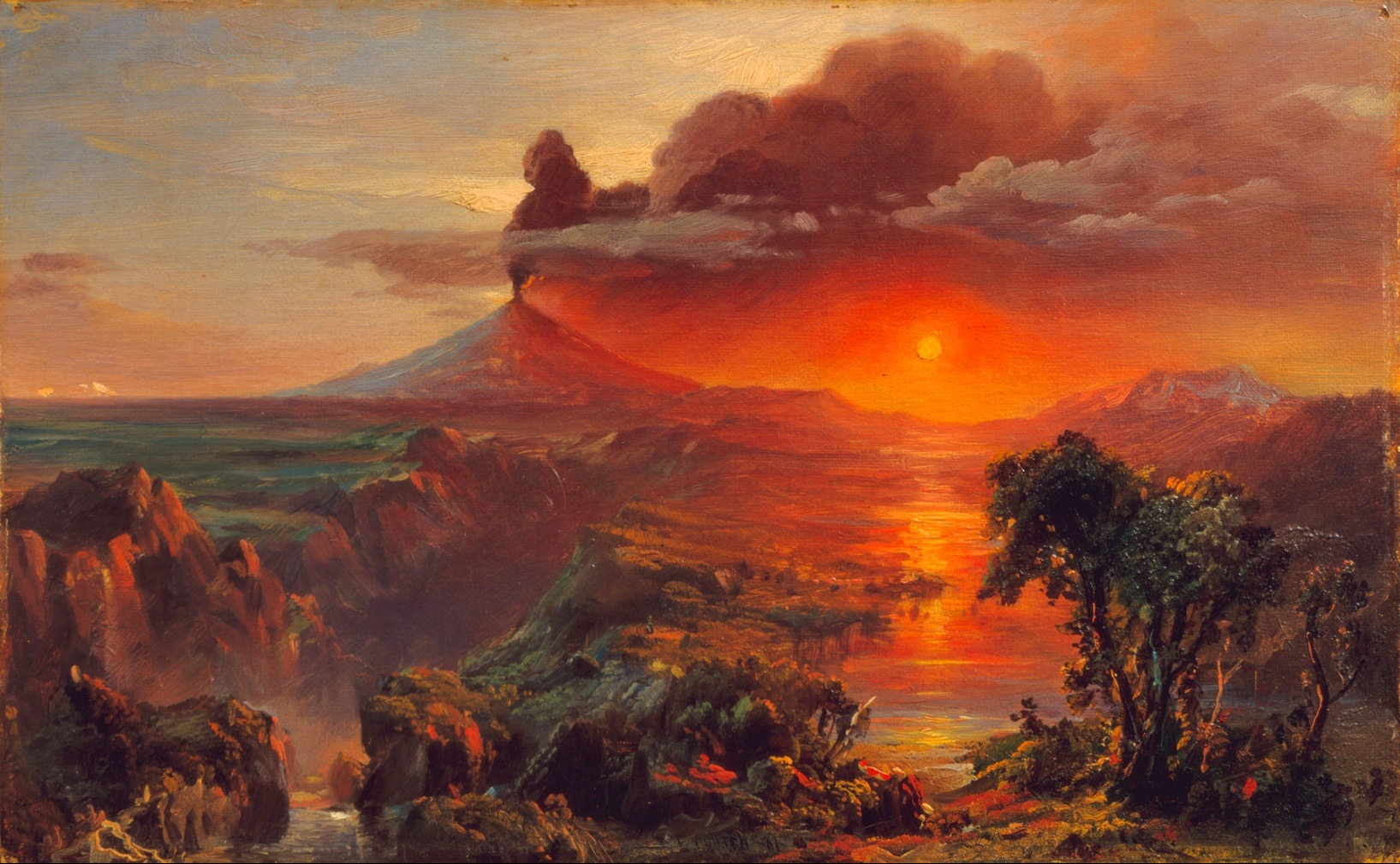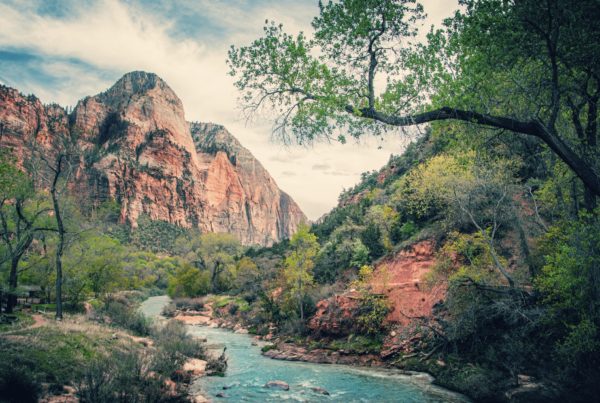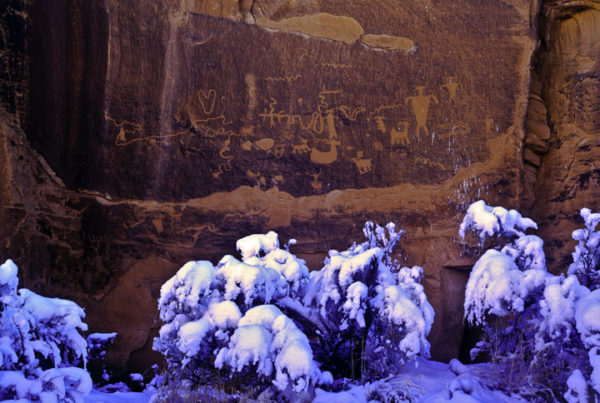I see it and then I don’t: the red mountain crowned in white. Mists pour in and collect themselves. White puffs frame the peak, like cresting waves before they crash into diffusions. We approach the summit from the north, traversing the chiaroscuro dreamscape of the “rain sender,” the guarantor of the land’s fertility, the place where the gods live.
Climbing to the Moon
Cotopaxi is an active stratovolcano in the Andes Mountains in Latacunga Canton of the Cotopaxi Province, about 50 kilometers south of Quito. It is the second highest summit in Ecuador, reaching a height of 5,897 meters. According to locals who speak Quechua, coto meaning “moon” and paxi meaning “neck” refer to the crater shaped like a crescent moon. As I step out of the bus onto solid ground, I feel my body reckon with thinned air in my lungs. My cells know I am entering a thin space, a threshold between realms.
— Ex. 20:18
Cotopaxi hovers above me like the archetypal mountain, bridging the gap between heaven and earth. Sacred texts invite readers to ascend the mountain. Nephi and Moses describe being caught up “into an exceedingly high mountain” and seeing the Lord (Nephi 11:1, Moses 1:1). John writes that an angel carried him “away in the spirit to a great and high mountain” (Rev. 21:10). The ensuing theophanies include visions of creation, why and how all things came to be. The prophets stare into the heart of God and find Wisdom there, waiting.
The absence of shrubs and trees in this landscape creates an unfamiliar stillness. It is as if I have traveled back to the beginning of time, to the first fires smoldering, steam still careening off freshly formed mountains, the valleys still turning over, stretching bone and rocky sinew before settling into a tapestry of soil, water, and windsong.
Wisdom Stitches up Creation
What, or rather Who, is Wisdom? Many of the cathedrals of the Orthodox Christian world are dedicated to The Holy Wisdom. In their icons She is a fiery angel, crowned and enthroned, surrounded by rings of light with the earth beneath Her feet. Proverbs reveals Wisdom assisting the Creator as the world is formed: “When he established the heaven I was there, when he drew a circle on the face of the deep, when he made firm the skies above … I was beside him, like an architect [Hb., ‘amon]” (RSV Proverbs 8: 27-28, 30). The Greek translated it as harmozousa, meaning “the woman who holds things together,” or “the woman who keeps things in tune” (LXX Proverbs 8: 30).
Once the world is formed, Wisdom forges the celestial order. Anciently Wisdom held the secrets of harmony and wholeness that connected all in love and compassion. She was the bonds of the covenant of peace—the everlasting covenant. In the Book of Enoch, just before the first temple of Jerusalem is destroyed at the end of the seventh century BCE, Wisdom is rejected by the priests. Their spiritual eyes are closed, and Iniquity replaces Her. The main purpose of the temple liturgies was to maintain the everlasting covenant of the Creator with all of creation. Worshipers learned of this connection between heaven and earth through right teaching. With the exile of Wisdom from the temple, though, the knowledge and language of the powers of this highest order of priestesshood and priesthood were corrupted and lost.
I am climbing to Refugio José F. Ribas, which sits at 4,800 meters above sea level, seeking refuge. Its yellow, corrugated steel roof disappears and reappears as I climb the steep ascent. I exhale and my breath is stolen by the wind whipping around me and through my hair. Each inhale expands my lungs past its previous capacity. I walk in slow motion up the incline, though my heart is racing as if I were running full speed up its face. What it demands of me is both exhilarating and terrifying. I see the sacred order more clearly at such heights. This is why I ascend to mountaintops, where my head and heart are less divided, the demands on my body a kind of sacrifice to know how Wisdom holds up the sky.
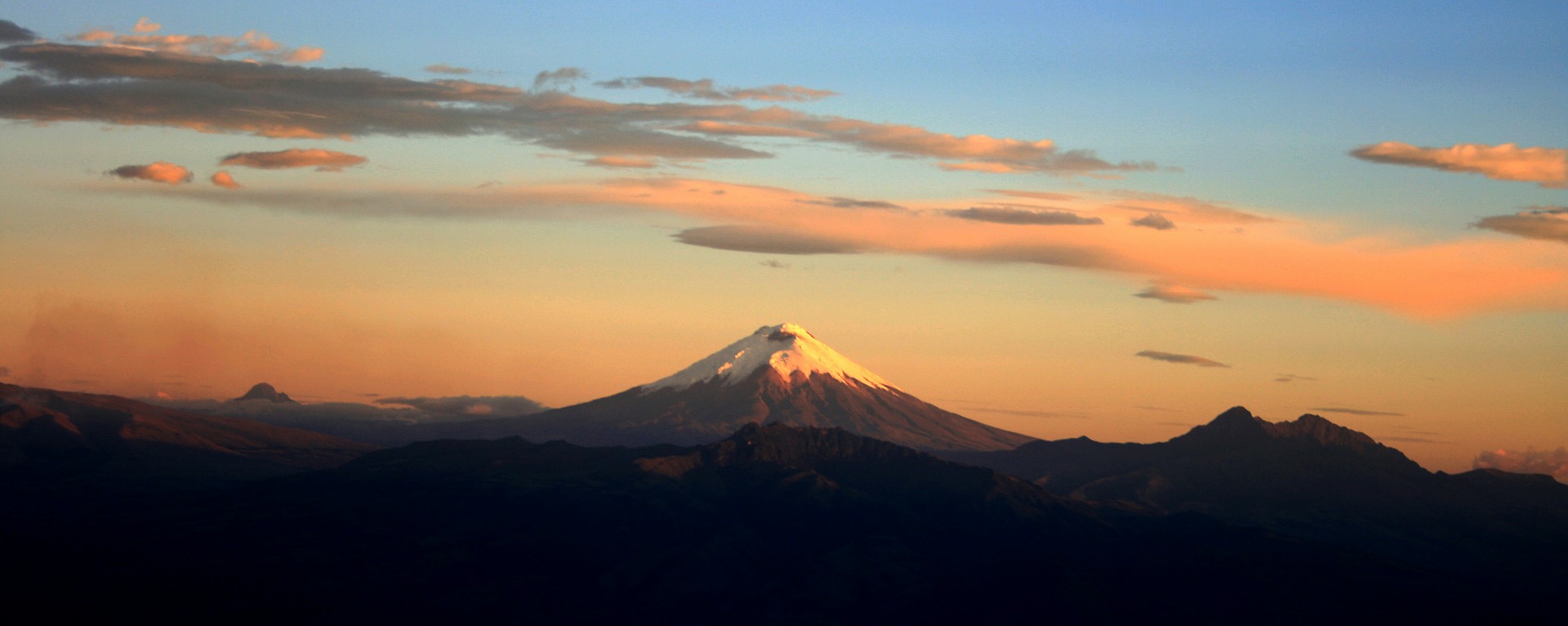
Where is Wisdom?
Today, I seek Wisdom, and I find thin air and windstorm. My need for language, ancient and new, with the power to bind us to creation before it is too late, propels my ascent up the foreboding path. The temple script of my LDS tradition is as fractured as our collective ability to talk about the creation in a way that can save it, to allow Wisdom to walk with us toward the face of God. I miss my Mother-tongue. I search for fragments of it in scripture, in my heart, and in the temple of the mountain. I feel the void of divine feminine power and Wisdom’s endowment that integrates scientific knowledge and theological knowledge, since we have falsely claimed that creation and human society run as separate systems.
For the ancient Isrealites, losing Wisdom meant the unraveling of creation, human society, and individual lives, the breaking of the covenant of peace. She became a victim of the idea that humankind owns knowledge. Margaret Barker says, “The state of the creation, and knowledge about the creation, were closely linked. When one was fragmented and separated from God, so was the other.” Understanding Her continued loss to the world makes sense of the difficulty we in religious communities have with establishing a credible theology for the environment, one that can truly call on the kind of power that can change our course; we have lost the vision of Wisdom.
Wisdom’s Vision for the Earth
On the path, I can’t hear myself breathing. The wind collapses all distance around me. Sand and lava rock give way under my deliberate feet. Sprays of burnt red, black, and beige rocks contour the arching ridge that serpentines through thick haze. Shifting again, transmuting into white puffs of cumulus, the clouds suddenly deepen the blue sky that rounds in depth momentarily above my head. Every time I turn around to see the valley below with its undulations of muted greens, purples, and blues, a new framing carves out a new vision of what lays below. Sometimes all that is behind me disappears completely. With every revelation of light from above, deep shadows mark the land.
Wisdom was the cloud of glory in the first Jerusalem temple and the cloud that followed the tabernacle of Moses. She was the mist hovering over the face of the waters as they separated from the land. She is the Great Weaver of peace, love, and continuance. I find Her in the promise kept, the heart broken in compassion, the tongue free of deception. I find Her in the dance of elk and wolf, in the tree whose fruit opens my eyes, and the tree that keeps them open forever.
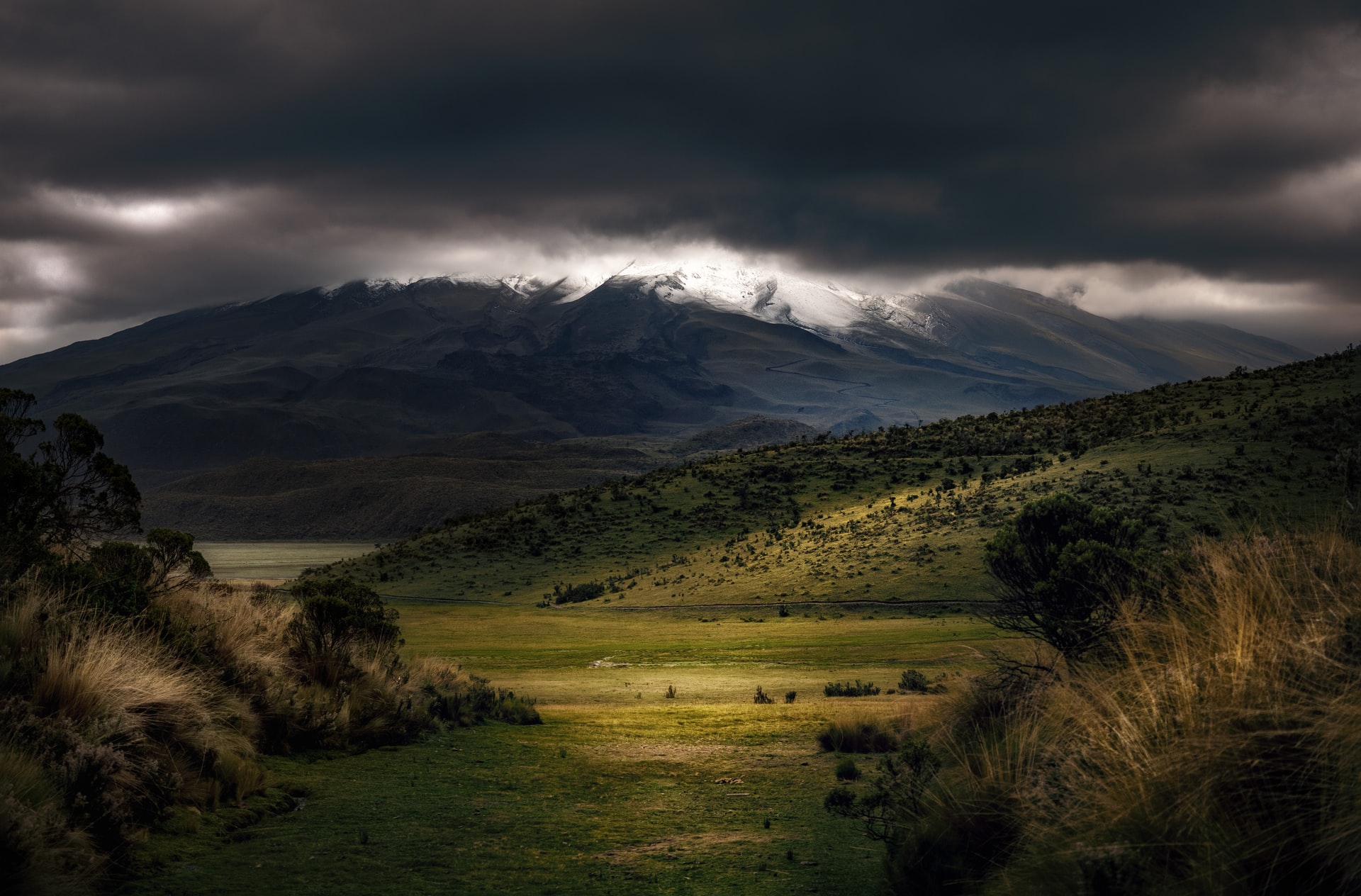
I arrive at the refugio on God’s mountain surrounded by the ever-expanding and encircling arms of Wisdom. Her robes drape the land, Her heart laments with love over every inch of life. We mourn our losses together. I know She is prophesied to return to a temple cleansed and consecrated by rituals of penitence and atonement. I know that returning Wisdom to the holy of holies will heal the world with the knowledge of the angels. I feel a shift in the air, and hear theological discourse again taking up the distinction between fragmented knowledge and the Holy Wisdom who joins all things together. How critical it is that our own LDS discourse contributes to this conversation through recounted stories of our own personal ascension journeys to commune with the Goddess of the Mountain, and the Goddess of the Cloud.
Joel 3 describes the mountain of the Lord as Zion. It makes sense to me that establishing Zion, as Moses and Joseph Smith intended, and as Enoch and his people actually did, means entering into an order in which all come symbolically to the tops of the mountains to enter into a higher law, into the visions and mysteries of creation through the everlasting covenant, through the binding powers of Wisdom. The ascension of the City of Enoch could not be stopped. The very earth under their feet left with them, as it too entered into Wisdom’s covenant.
She is the veil parted, the signs given, our spiritual eyes open, our tongues loosed with the gift of prophecy. I await the return of Wisdom and see many engaged in preparing a way for Her to reestablish an order and peace that weaves together all knowledge and truth, so that Isaiah’s words will finally come to pass: “They shall not hurt nor destroy in all my holy mountain: for the earth shall be full of the knowledge of the Lord, as the waters cover the sea” (Isa. 11:9, 2 Ne. 21:9).
As I look up at Cotopaxi’s shrouded summit, I imagine the Goddess of the Mountain, the Goddess of the Cloud returned from exile, our inner landscapes unburdened by the blindness of mortality, and Earth finally at rest. I envision a world anointed by Her dew—Her love—and hope quickens my heart.
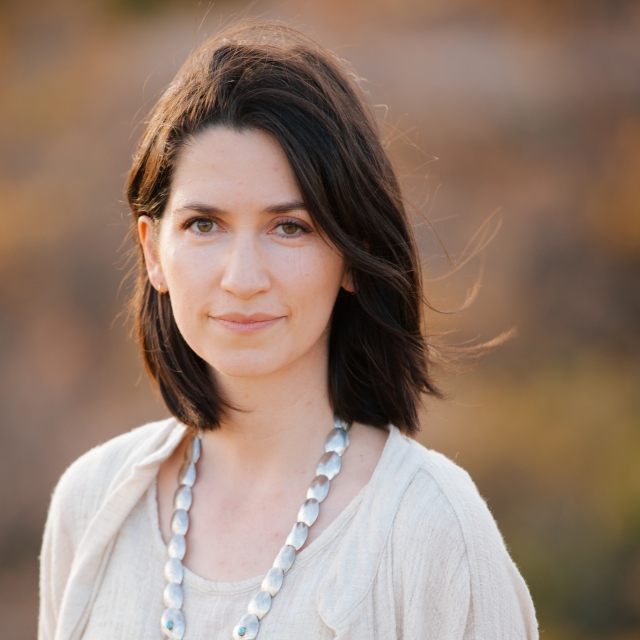
Kathryn Knight Sonntag was born in Salt Lake City, Utah. She received a BA in English and a BS in environmental studies from the University of Utah before earning a Master of Landscape Architecture and Environmental Planning from Utah State University in 2014. Her thesis focused on the role of the transcendent in landscapes and greatly informs her first collection of poetry, The Tree at the Center (BCC Press, 2019).
